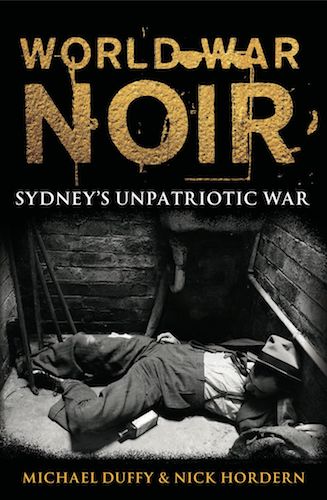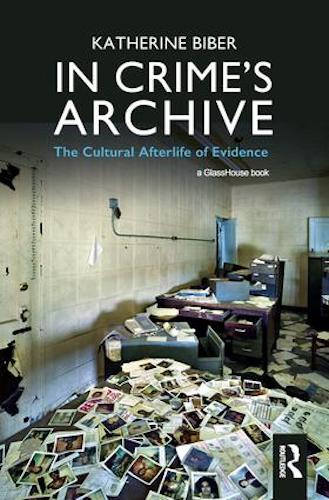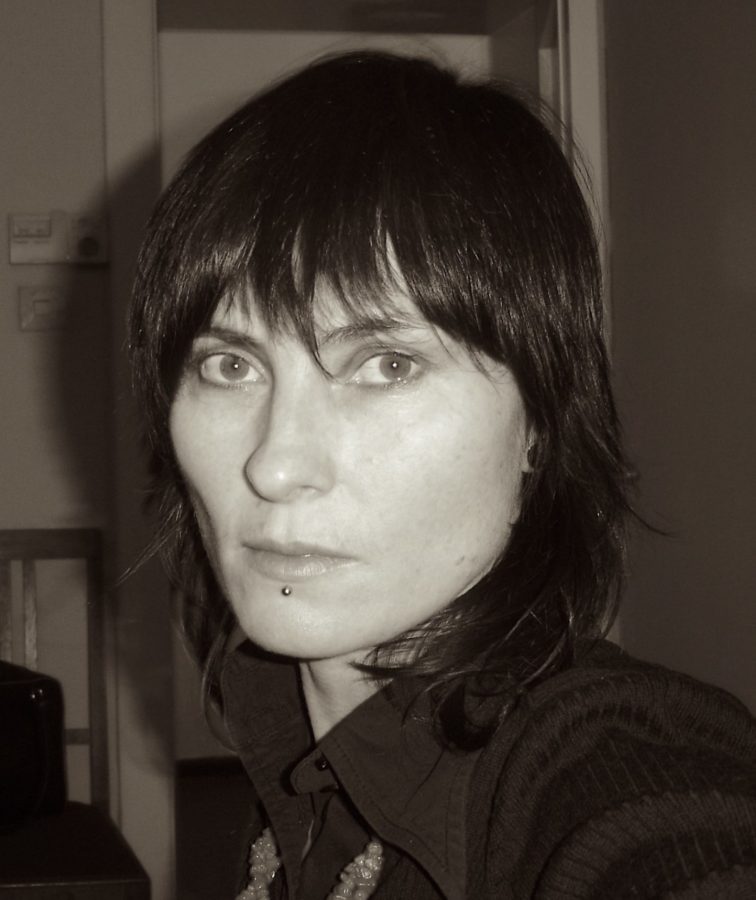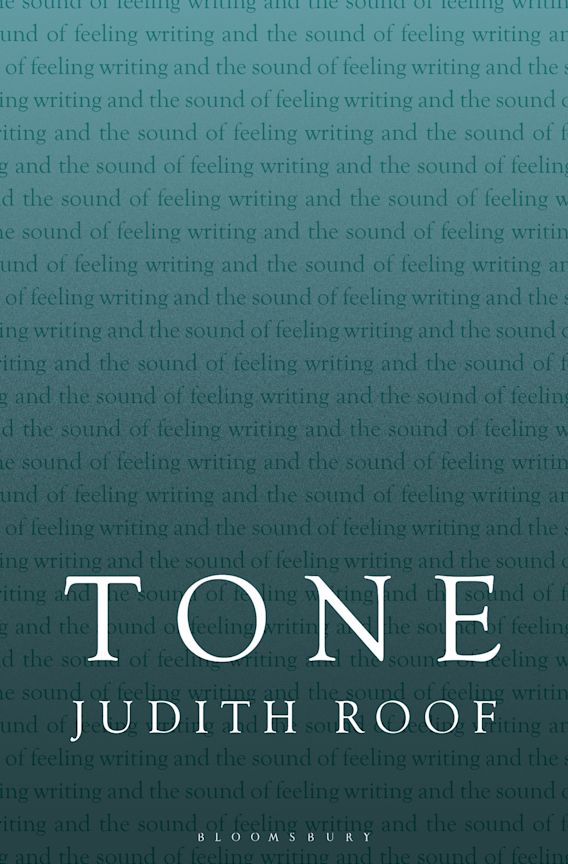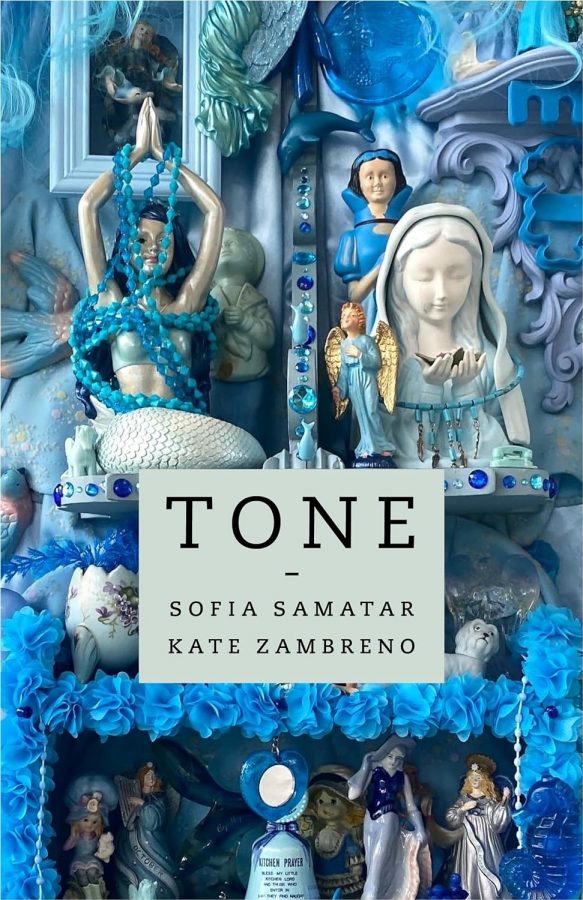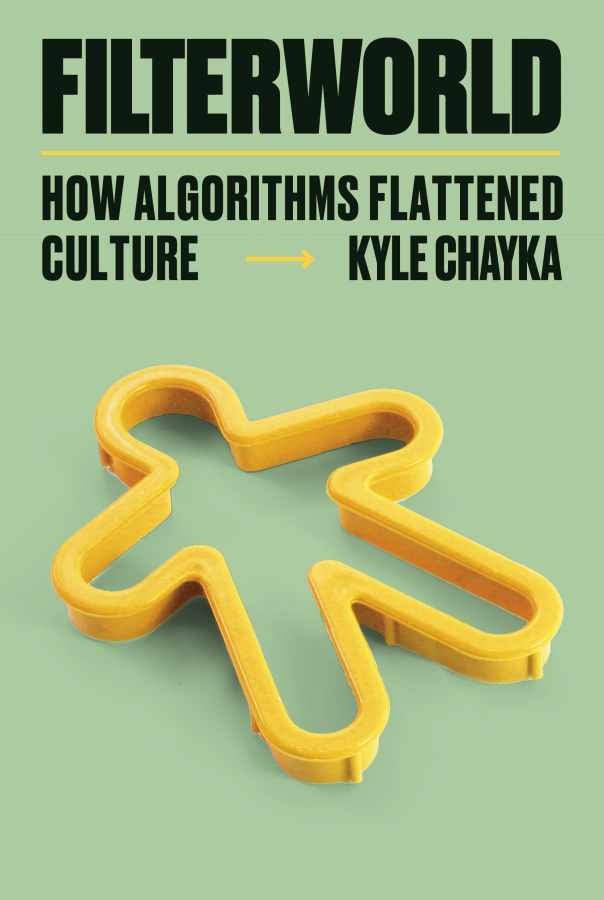Arresting Images: World War Noir and The Afterlife of Evidence
World War Noir is a welcome addition to the under-written history of one of this nation’s most fascinating periods. Taking as their premise the demolition of the myth of a virtuous community united in the war effort, authors Michael Duffy and Nick Hordern lead us chronologically through the second world war as it was lived in Sydney, each year forming a chapter.
The ‘War Memorial View’, as they call it, doesn’t survive. Nor should it. Whilst Australia obviously had nothing like the quantity of combat and atrocity on its soil as Europe and parts of Asia, it was a society transformed by war – economically, politically, sexually and culturally. Such upheaval is bound to feed opportunism and transgression. Refugees had begun arriving from Europe in small numbers since before the war, helping transform Kings Cross and surrounds into more cosmopolitan areas; once the war began, ‘enemy aliens’ – people of German, Italian or Japanese origin – were rounded up and put into internment camps. No matter if you were Jewish, or born here.
Even the best off – those of White Australia’s requisite Anglo-Celtic background – had reason to mistrust the war. The first world war, with its massive casualties, was only twenty years past. ANZACs knew they’d been used as English pawns. For years after its end, the streets were full of traumatised and neglected veterans, begging, lame, alcoholic. The Australian government was therefore more circumspect in 1939, forming the Australian Imperial Force for overseas combat, and the Australian Military Forces – the Militia based in Australia. Most soldiers were in the latter, conscription was not straightforward, and ‘the atmosphere in which [the early enlistees] joined up was a mixture of enthusiasm, confusion and even cynicism’. As ever, joining the army meant a wage for many, an adventure and escape.
War, of course, is good for business. Some industries more than others. Many saw a chance to better their wages and working conditions, and industrial action increased, particularly in NSW’s coal industry. In the illicit economies, Sydney’s cast of petty thieves, lurkmen, blackmarketeers, bludgers and con artists were well honed, having cut their teeth during the Great Depression, and habituated to liquor licensing that had imposed the ‘six o’clock swill’ since 1916. The Communist Party of Australia was an influential force, not just among the unions but also the literati, including novelist Katherine Susanne Prichard, one of many who spied for Russia during the war.
She, along with a dozen or so others emerges as a character in World War Noir, as the authors follow their feats, weaving apparently disparate stories together to form a portrait of our city during the war. Working girls Dulcie Markham and Nellie Cameron feature, along with their ever-changing cast of lovers and husbands. Robert Kwan, US Chinese racketeer; Francie Bernie and Wallie Clayton, CPA members involved in espionage. The wharfies are a force, pilfering cargo of alcohol, cigarettes, perfume and lingerie; at other times refusing to unload. Prime Ministers Menzies then Curtin appear. And our favourite celebrity crims, Tilly and Big Jim Devine, Kate Leigh and Chow Hayes.
While World War Noir romps along, anyone who knows the field will trip up occasionally. Police Commissioner William MacKay is one of the most fascinating, yet most opaque figures of the era. The authors rely mainly on Truth, Ezra Norton’s Sunday tabloid, to flesh out their portrait of MacKay. Truth provides great fodder but the method also cuts corners.
Tilly, Kate and MacKay were adept at manipulating the media: more cross-references and grains of salt would have enriched the book. One big issue, due to the draconian licencing laws, was sly-grog convictions. Corruption was rife and nightclub raids completely partisan: Truth pursued MP Alam’s illegal operation Graham’s, as well as Phil the Jew Jeffs’ clubs the 400 and 50:50, but the paper was motivated by competition rather than morals. Norton had a share in the Trocadero nightclub, which opened in 1936 and by wartime was one of the city’s most popular dance halls. The reader should be told this.
Scottish born, MacKay was the Scipione of his time: zealous, authoritarian, largely concerned with his personal reputation as an enforcer. The one big difference was that MacKay drank like a fish, another fact that shouldn’t have been omitted. Richard Evans is the scholar who has peeled the most layers back from this man; Duffy and Horden are sceptical about some of his claims. I incline to Evans’ theories, including proof that MacKay was not even present at the famous Rothbury Strike: the credit he later took for breaking it up has persisted in the Australian Dictionary of Biography, and in this book. Evans also proves how much MacKay had to do with whipping up fear of razor crimes to give his force more power, to the extent that he wasn’t policing ‘Razorhurst’ so much as creating it. Yet the myth of ‘the razor gangs’ underpins practically everything about early twentieth-century Sydney to this day, for the same lack of interrogation of the media as main storyteller.
Duffy and Hordern lay bare the hypocrisy engendered by excessively strict legislation, explaining its complications and contradictions masterfully. SP bookmaking was so established that Thommo’s Two-Up, a Surry Hills-based roving game, operated for decades and included clientele such as Premier McKell himself. The Liquor Act (1919) with all its loopholes and anomalies must remind the contemporary reader of today’s lockout laws. There is much to laugh at with hindsight: booze being bought from country pubs then sold at inflated prices in city pubs that had gone over quota; come nightfall the price goes up again. And again for the Americans, charming, cashed up, laden with cigarettes and nylons for the girls, an army thoroughly aware of its ascendance to world domination, down to the poorest African-American servicemen. Duffy and Hordern don’t gloss over the racial segregation and extreme prejudice so ingrained in Australia, but provide solid context. They also point out elegantly the range of sexual transactions in this very busy time, from the aforementioned professionals, to the ‘good-time girls’, suburbanites out for fun and a buck while they were at it, often mere adolescents.
Several times Duffy and Hordern acknowledge the limited accuracy of the period media; investigative journalism wasn’t developed and police records themselves were unreliable. The corollary of this should be greater scrutiny of their sources, but the authors have opted for a narrative with less interruptions. It’s smart, supple and highly entertaining with a bit of a campfire feel: ‘We last saw Chow Hayes in Long Bay Prison.’ But it can also be frustrating. For instance, in the case of African-American US soldiers, the relationships they established with Sydney’s non-white and Aboriginal inhabitants are barely mentioned; indeed these communities are generally ignored. Staying with the media of the time means staying with the status quo of a white male voice which assumes centrality (and impartiality). And so, although this book is going against the received wisdom of wholesome wartime patriotism, it is still neglecting lives that same jingoism erased, which leaves them in an ambivalent position.
It is also difficult to begin a narrative in 1939 without a lot of context from the previous decades. For instance, there are sidetrips to Brisbane where the proportion of US servicemen was even greater than it was in Sydney. But the reason this path was so well worn was that for years already crims had chosen the road north to escape Sydney’s notorious consorting laws and working girls like Nellie found better conditions up there. The consorting laws entirely transformed working-class Sydney, and the heavy policing they allowed was a big reason working-class communities took breaking the law for granted: prostitution, betting and the sale of sly grog were completely entrenched as everyday jobs for these people from the 1920s onwards.
On the other hand, it’s a masterstroke to pay attention to all the pages of Truth. A contemporary eye might dismiss as filler the tawdry divorce column, the pages and pages of racing and sundry mentions of small-time crooks. Yet these seemingly incidental stories reveal so much of social morés at the time: prudish, punitive, churchy, with a massive chasm of hypocrisy between private and public. The wit, ingenuity and sheer craziness of some of the cons would be impossible in today’s digital age. Take magsman Kenneth Euesden, whose CV before the war included destitute metallurgist in Rockhampton and impoverished salesman in Adelaide. In 1941 he joined the AIF; subsequently he was fined £20 for wearing medals he hadn’t won. He deserted three times then was gaoled for stealing a gold watch. After that, he went hitchhiking in the Hunter Valley in a captain’s uniform, persuading a businessman to detour from Brisbane to Lismore, regaling him with stories of heroism in Crete, ‘borrowing’ £17. In Lismore he persuaded an actual army captain to endorse a cheque. He was ‘wined and dined and banqueted and gave an interview to the local newspaper describing his harrowing experiences in Greece and Crete – all this from a man who had never left Australia.’ The following year his repertory extended to include an American serviceman, a medical officer, a veteran (swathed in bandages) from the New Guinea battlefront, to name a few. Nice one, mate.
Another fascinating character from this time is criminal lawyer Harold Munro, whose unsavoury reputation by the time of the second world war was sealed. Munro was named in a ration ticket rort with fellow criminal lawyer Phillip Roach earlier in the war – a bit of pocket money to offset his retainers from Tilly and Kate, and keep him in drink. His role in an elaborate entrapment lurk with two police officers, Griggs and Carney, is underplayed. Griggs and Carney entrapped no less than two hundred men in one year in public toilets, and Munro appeared for most of them for cash bails; the trio came a cropper when they netted high profile Clarence McNulty, editor-in-chief of Frank Packer’s Consolidated Press, in turn a friend of MacKay’s. Griggs and Carney were dismissed from the force, an astonishing outcome at a time when homosexuality was illegal and public cruising its most heavily punished aspect. The officers subsequently sued for damages and were reinstated, possible evidence MacKay had his bet both ways. It was a bad year for Munro, whose wife at the same time sued him for unfulfilled conjugal duties. McNulty was dispatched to London. At the beginning of this section, Duffy and Horden truthfully write ‘Society’s war on homosexuals continued.’ At the end they blithely attest, ‘After [McNulty’s] divorce in 1949 he remarried. If he was really gay there would have been no need for that – although human nature of course, is infinitely mysterious.’ Huh?
Duffy and Hordern are excellent at conveying everyday life in Sydney. They build the mood that led to such an array of responses to the war; the personal and communal are never subsumed by dry political exigence and it’s reassuring to immerse yourself in a society seemingly more disobedient than contemporary Sydney. Grist is drawn from diaries and novels, most particularly Donald Friend’s and Dymphna Cusack and Florence James’s Come in Spinner. While both are great accounts of the era, I wonder if they are relied on too heavily. Kylie Tennant’s wartime Woolloomooloo from Tell Morning This would have fitted in beautifully. And where is Peter Doyle, whose crime fiction quartet starring knockabout Billy Glasheen starts during the war? Doyle’s work with NSW Police’s forensic photography in the books City of shadows and Crooks like us, even if drawn from photography prior to the war, is also indispensable for the insights it provides into Sydney’s hidden side, still unsurpassed.
The cover image of World War Noir was first published in Doyle’s book; it depicts a male corpse, dramatically contorted, at the bottom of a lift well with an empty liquor bottle by his side. It’s an arresting image, but coming as it does from the late 1930s, documenting a death that could have occurred years earlier or later for any number of reasons, it seems to have been chosen more than anything to get the attention of book buyers.
Katherine Biber’s In Crime’s Archive examines such photographic material from a far closer and very different perspective. A Professor of Law at University of Technology, Biber is interested in the afterlife of evidence, be that objects related to the crime, photographs – of the crime or of places and people involved – documents, and so on.
The first chapter ‘The afterlife of police photographs’ is a great introduction to the genre – which it has become in just a few decades – with generous references to its Belgian-US progenitor Luc Sante, whose Evidence (1992) now costs a bomb on the internet. The ethics of reproducing photographs from police archives, particularly of corpses, is thoroughly examined, persuading me even more to unease with Duffy and Hordern’s choice of cover. Who was this person? Biber asks, as Sante and Doyle did, with curiosity, empathy, sometimes also with fear and wonder. The police who first took or examined the photographs posed questions without aesthetic concerns. Supposedly. Photographs of corpses, in fact, are relatively rare in the archive. Doyle, in going through NSW Police’s huge collection of early twentieth century photographs, describes most of them as being ‘images of negative space … I’m sort of loving the absence of subject … Photos of just of an empty street, or through an open window, and what the hell is inside the window?’
‘Police photographs,’ Biber tells us, ‘accumulate facts, fictions, patterns and accidents.’ The ‘vast grey zone’ between art and non-art that photography occupies in general, is intersected with violence, accident, and sundry images of lives and locations often considered too banal or unworthy to be subjects of stories. In these archives, they are rescued, preserved, but perhaps distorted. The introduction of colour into the medium took the ethics of accessing private trauma to another level, with, greater ‘ghastly detail’ it provided. But more broadly, the increase of photographs in newspapers, and in colour, the increase in televisual storytelling from cinema to current affairs, helped pave the way for our increased appetite for crime scene photography.
Biber critiques Underworld, an exhibition at Sydney Living Museums that last year capitalised on Doyle’s prior work with NSW Police’s early twentieth-century mugshots and crime scenes. Curator Nerida Campbell considers the photographs ‘social documents’ that can increase our understanding of the period. Sure, but Underworld used text almost entirely from newspapers and police reports of the time, taking it too close to bias, bringing the subjects of the photographs to us as criminals first and people second, the opposite of Doyle’s endeavour.
The Nutshell Studies of Unexplained Death is a collection of doll’s houses containing crime scenes, made by Chicagoan Frances Glessner Lee from the late 1940s onwards. Born into a wealthy family, Lee was not permitted to study despite her passions for medicine and the law, and so she occupied herself with creating these Lilliputian crime scenes. Although her purpose was to provide studies for students, interpreters have found autobiographical clues amongst the dizzying detail; all the scenes also depict what we’d call today domestic violence, a pointer to the restrictions imposed even on the most privileged women’s lives.
I’d never heard of them, but The Nutshells now have a cult following, most on display in the Smithsonian Museum. A poet has written about them – leading to another of Biber’s questions: while the legal process binds the access, use and interpretation of evidence, beyond it those rules have no power. What then, when evidentiary materials remain so ‘vibrant and charged’?
In analysing what should and shouldn’t be shown, and different decisions made around the world, Biber suggests that ‘a jurisprudence of sensitivity can provide a conceptual framework …‘ The problem of exploitation is everywhere, and in skating right to the edge of its examination, Biber almost does so herself. I often felt implicated, reading analyses of the murders of Jill Meagher, the less known Allison Baden-Cleagh, and Reeva Steenkamp who was killed by her partner Oscar Pistorius; I often grimaced. The latter case is given an entire chapter: the effect of South Africa’s apartheid history on the decision to broadcast the trial live was eye-opening. Ubuntu, a humanistic philosophy of South Africa, is about ‘human dignity itself, respect, inclusivity, compassion, concern for others, honesty and conformity.’ Ubuntu, which I understand as radical transparency and inclusivity, compelled live broadcast of the trial, down to a 24-hour dedicated television channel, notwithstanding the censure of certain evidence. I can still remember footage of Pistorius retching in the courtroom, on the evening news. I hated seeing that: it felt gratuitous.
Right at the end of this chapter, Biber notes that in the courtroom next door a black man was on trial for the rape and murder of his girlfriend, but whereas police had acted on the murder of Steenkamp immediately, they took nine months to charge Thato Kutumela. Nor did we see that trial around the world. I’d have to agree with Biber’s conclusion: ‘Broadcasting the Pistorius trial did nothing to address public perceptions about injustice in South Africa, and in some quarters only served to consolidate them.’
How do we stay with empathy and avoid voyeurism? A long line of decision makers determines this. People frequently mention their limits: Peter Doyle refused to show victims of sexual violence; a curator of Forensics, a 2015 exhibition of the Wellcome Collection in London, noted that during her years of research she ‘opened and closed some books very quickly’. The most extreme crime scene photographs notoriously end up in private collections of retired police officers, including Doyle’s own uncle. Are they saving them for private voyeuristic pleasures? Or saving us from the images? Sometimes they are saving them for sale on the lucrative blackmarket. Tabloid media comes off the worst, with Rupert Murdoch’s tweet after the Martin Place Lindt café siege instanced: ‘AUST gets wake-up call with Sydney terror. Only Daily Telegraph caught the bloody outcome at 2.00 am. Congrats.’
The exhibition of evidence is picked up in later chapters. ‘The museum’ and ‘International crimes’ deal with curated shows by artists who use evidentiary materials rather than documentary presentations, such as the mugshot exhibitions we saw at the Police and Justice Museum in Sydney. Biber is a sensitive and astute art critic. Describing Forensics, she locates the clincher: ‘Each of the artworks … attempted to humanise crime.’ One of the best known artists to work with evidence and crimes scenes, Mexican artist Teresa Margolles, featured in Forensics. Trained as a pathologist, with years’ experience working in morgues in Northern Mexico, Margolles’s work has brought attention worldwide to problems of violence in Mexico, particularly against women. It is moving, subtle, and visceral, and her use of evidence such as blood, body parts, clothing and mortuary products contrasts starkly with the tens of thousands of desaparecidos – the disappeared.
Biber also considers Mirroring Evil, an exhibition at the Jewish Museum in New York in 2002 in which contemporary artists represented the Holocaust. There’s a notable departure from the confines of evidence with the material further removed in time. American artist Tom Sachs, who made a 27-inch model of a concentration camp from a deconstructed Prada hat box, claims rather glibly to not be trying to make a point about the Holocaust, his generation having ‘a certain distance from those events’.
Other artists looked at include Susan Schuppli, London based, whose project Evidence on Trial draws from the archives of the International crime Tribunal for the former Yugoslavia. The volume of evidence is astonishing: ‘By 2009, the ICTY records occupied 3704 metres of storage shelving and 8000 terabytes of electronic records.’ This evidence is supposed to end up in The Hague, but some, including Schuppli, argue it should be repatriated.
Bosnian multimedia artist Sejla Kameric works with memory and how it shapes the present. Her ab uno disce omnes for Forensics used a mortuary fridge as a repository for files, images and documents relating to the war. Once the viewer is inside the installation, the door shuts. The materials come from Kameric’s own research and fieldwork (her father and two uncles were killed in the conflict) and add up to a mind-boggling 50,000 files and 85 hours of viewing material.
Biber recapitulates Omer Bartov’s warning about tasteful representation and its ‘mendacious potential for voyeurism, the dangerous pleasure that describes our fascination with crimes, including mass crimes.’ Schuppli, Kameric – also motivated by the lack of information about victims and mass graves – and a third artist Jason File are all striking for their rigour and painstaking processes related to the handling of these materials as well as self-interrogation. File, whose day job is as a prosecutor at The Hague, made works with hole punch detritus accumulated at work. The concept of the hole ontologically – is there such a thing? – does it signify removal or fabrication? – underpins works about legal practice by dealing with the supposedly banal materials of miniscule offcuts from paper files. All these artists ultimately use their own document classification policy.
Biber’s a fine writer. Here she is on The Nutshells:
Each dead doll wore handmade clothing and undergarments. Lee stocked their tiny larders and peeled miniature potatoes which she placed in their little kitchen sinks. Beneath a kitchen sink, the floorboards might be water stained. … These are superb doll’s houses, furnished, appointed, decorated, but with the dolls either hanged or drowned or stabbed or bitten or poisoned or shot dead.’
Sometimes, though, I longed for her to throw off the scaffolding of academic citation. Further, to find a different publisher who could have given her a better copy edit, quality reproductions worthy of the fascinating illustrations throughout the book (into the cheap white paper, the images sadly sink and blur); a publisher who charges less. At a discount, Booktopia will sell you In crime’s archive for $175.00. But Routledge is an academic publisher. Biber has a justifiably excellent reputation in her field, but hopefully next time she publishes a book it will be more accessible to all of us.
